My Musical Career | Part Thirty
Short Tours with the Orchestra – 1986
While most of the tours that the orchestra undertook during my fifteen years with the ensemble were of two weeks or more duration, there were several shorter ones of shorter duration that were quite notable. I’ll devote this blog post to three that occurred during the year 1986. By this time, the orchestra administration had undergone several changes since my arrival in Oslo in 1983. Trond Okkelmo had succeeded Turi Ebbesen as Administrative Director in 1985, and Atle Opem succeeded Ove Brun as Stage Manager. Terje Mikkelsen was still operations manager. It was with this team that we undertook three short tours during 1986. The first was a run-out from Oslo to Tromsø, way up above the Artic Circle. The interesting thing about this tour, and why I call it a run-out, is that is was accomplished in the course of a day. We flew up in the morning, and were back home by midnight.This took place in February of 1986, if memory serves. The second tour was a three day trip to France in June of 1986, where we took part in the Rouen Summer Festival, and the third tour was a three day trip to Edinburgh, Scotland where we took part in the Edinburgh Festival.
Tromsø 1986
The tour to Tromsø, as I mentioned earlier was unusual in that it was not an overnight tour. We left Oslo early in the morning by plane; arrived in Tromsø around noon; we had what the Norwegians call a “sitterprøve” – a short run-through of the program in order to get used to the acoustics of the hall – for an hour and a half, after which we had time to get lunch and walk about the town; it was time to get back to the concert venue and prepare for the concert. The program consisted of just two works: Jean Sibelius’ Violin Concerto with Arve Tellefsen as soloist, followed by Tchaikovsky’s Fourth Symphony. This was not my first go-around with the Sibelius, which is a glorious piece, with an excellent part for the timpani. It is as challenging a part as any of the symphonies, and was a great favorite of my great friend and mentor, Dan Hinger. As for the Tchaikovsky, although I’d recorded it with the orchestra in 1984 for Chandos, I had never played it in concert, and this was to be my first go-around with the symphony and it’s notoriously difficult first movement. A great program for a timpanist and I was very much looking forward to it. In Tromsø, due to the size of the venue’s stage, which was not very large, we were limited to an orchestra of no larger than eighty-five players (down from our normal size of ninety-eight at the time). Some reductions in the strings were made, and that fact that we did not have to bring a harp, keyboard player, or extra brass or winds helped keep the orchestra to the required size. This was the first time in which I used the Light timpani on tour, or at least as many as we had at the time. At this time, we had the two Metro Bs and the large Continental chain drum, and with the addition of the 23 inch Ludwig, that was the set I used on this quick trip.Our three percussionists at the time, Per Erik, Tyrgve, and Per were on board for this trip and needless to say, gave good account of themselves on this concert. As did the orchestra. Arve Tellefsen did a masterful job as soloist On the Sibelius, and the Tchaikovsky went well, with just the right amount of manic energy to make it an exciting performance
My main memories of this trip, other than the concert, were of flying over the Norwegian mountains up to the Arctic circle. This was a vista that I had never before beheld, and the snow covered mountains and fjords were amazing to behold. During the break between the rehearsal and concert, I had a chance to walk about the town a little, and noted the cleanliness and picturesque quality of the buildings. Also, how it got dark very early (even earlier than in Oslo). It was quite the experience.
Rouen, France – June 1986
The next short tour of 1986 turned out to be an important one for the orchestra and Mariss. An invitation from the Festival Maritme d’ete to give a concert at the chapel of the Cornielle College in Rouen as part of the 1986 festival was extended to the orchestra at the end of 1985, and accepted with alacrity. The trip was scheduled for early June of 1986, and was to last for three days. One day to fly
down; one day for the rehearsal and concert, and one day to fly back to Oslo. The full orchestra was scheduled to go this time, as there was ample space in the Cornielle College Chapel. The program was almost the same one that we played for the concert up in Tromsø back in the late winter: Sibelius: Violin Concerto, with Arve Tellefsen again as the soloist; and Tchaikovsky’s Fourth Symphony. As the opening work, Mariss chose Johan Svendsen’s “Carnival in Paris.” And for good measure, he added the 1919 Suite from Stravinsky’s “Firebird” for good measure.This was another first for me, as it was for the orchestra members. This would be my first time to visit France, and I believe it was the first time for the Oslo Philharmonic as well. For instruments, I used the same setup as I did for the concert in Tromsø: 31 inch Light Continental chain; 26 and 29 in Metro Bs, and 23 inch Ludwig Professional Symphonic.
Our flight down to France was uneventful, and we were promptly bussed to our hotel. We had the afternoon and evening to ourselves, so we used the time to good advantage. Several of us had an early dinner at the hotel. I remember relaxing with clarinetist Terje Nymark and cellist Geir Tore Larsen and throughly enjoying the meal and each others company. I then took a quick walking tour of the town. There wasn’t a whole lot of time to walk through Rouen, but I got a quick look at the plaza outside of the Abbe St. Ouen before going back to the hotel for the evening.
The next morning, we breakfasted and were taken to the concert venue, the chapel of the Cornielle College, or Lycee Cornielle. The orchestra was set up in the altar area, and from overhead, the setup looked like an inverted T, with the timpani and percussion at the back of the orchestra at the base of the T. In front, were the brass, then the winds, and the strings occupied the front, or top of the T. We had plenty of space and while the acoustics of the chapel were a little more lively than we were used to at home, we could still hear ourselves and were able to make adjustments and perform musically.
The dress rehearsal went very well, and we adjusted beautifully to the chapel’s acoustic.
The day was beautiful, and full of sunshine, so after the rehearsal ended, we had several hours to roam the city. I chose to lunch at an outdoor bistro with my colleagues and good friends Aline Nistad, principal trombone, and Jan Fredrik Christiansen, then the orchestra’s principal trumpet. The conversation was great, the weather lovely, and the food delicious. I ordered steak and fries, and I ordered the steak rare, which in France means almost raw. I enjoyed it, nonetheless and someone above was watching out for me as I did not suffer any ill effects. The three of us then took a short walking tour of the city, stopping in the local record shop, where there were posters of Mariss Jansons and displays featuring our Tchaikovsky recordings all over the store, in honor of our concert visit. It was kind of neat to see, to say the least. The concert went off extremely well. What made it special is that we started it off with the French national anthem, Le Marseillaise, which is an emotionally powerful anthem. It brought tears to my eyes and I felt goose bumps as we played, and the audience sang full voice. What a start to a wonderful concert. Arve Tellefsen practiced his supreme art with a glowing account of the Sibelius concerto, and we wowed the audience with fine performances of the Svendsen, Stravinsky and Tchaikovsky. The concert went so well that the orchestra received an invitation to return for the festival seasons of 1987, 1988 and 1990. That speaks volumes as to the impression we all made in Rouen that June evening in 1986. Chalk up yet another triumph for Jansons and crew!
Edinburgh 1986
The orchestra had been invited to play a concert as part of the 1986 Edinburgh Festival in mid-August, shortly after the members returned from the six week summer holiday. The tour was to be a short one – one travel day to fly to Edinburgh; one day for the rehearsal and concert; and the the final day to travel back to Oslo. The program was to feature three works: Weber’s “Euryanthe” Overture; Emmanuel Ax as soloist in Beethoven’s Third Piano Concerto; and Tchaikovsky’s 6th Symphony, the “Pathetique”. What was to make this period interesting was the fact that we were scheduled to record the symphony for Chandos upon our return from the trip to Edinburgh. The idea of touring and recording right at the start of a new season was new to the orchestra, as we usually made radio recordings of Norwegian music for the NRK for a couple of weeks before the concert season actually began. Not this time. Mariss arrived in Oslo at the beginning of August, and we got right to work. Rehearsals were intense, as we were rehearsing the symphony for both tour and recording purposes, and the concerto and overture for the tour only. We took most of the orchestra on this tour. Even though the overture and concerto did not call for percussion, and the symphony only called for two, we took all three of our percussionists as Mariss programmed a few encores that called for a full percussion. If memory serves me correctly, one of the encores was Elgar’s “The Wild Bears” from his “Nursery Suite”; another was “The Death of Tybalt” from Prokofiev’s ballet “Romeo and Juliet. For this tour, I used the Hinge timpani on this tour, as it was my plan to use them for the recording sessions which were to follow almost immediately on our return from Edinburgh.
As with the Rouen tour earlier in the year, three days were allotted for the tour. The first day was a travel day from Oslo to Edinburgh. The second day was devoted to business – rehearsal and concert. The
If any of you have ever seen the 1960 James Mason – Pat Boone movie “Journey To The enter Of The Earth”, based loosely on Jules Verne’s novel, you will recall the opening scene where James Mason, playing the role of geology professor Oliver Lindenbrooke is reading the news that he has received a knighthood for his scientific work in the Edinburgh paper as he is walking down the High Street. He is oblivious to the fact that a pipe and drum corps is marching down the same street and they obligingly make way for him (by going around him) and passing him by. He only notices them after they are past. In any case, I went up the same street on my first visit that summer, and was to do so on subsequent occasions. Edinburgh is a colorful and remarkable city. Edinburgh Castle sits atop the highest point in the city and is visible to all parts of the city. Our concert venue was the Usher Hall, which was the main venue for the Edinburgh Festival. The Usher Hall is not a new hall, as a matter of fact, it opened its doors in 1914. It has marvelous acoustics, and the stage is of the typical steep stepped arrangement, with seats for the chorus (or if there is no chorus, audience) to the rear of the orchestra, with a large pipe organ overlooking all. The acoustics are just fantastic. We fell in love with the hall from that first trip. Needless to say, the rehearsal went swimmingly, and the concert was a triumph. It led to us being invited back on several occasions. NB! As a matter of fact, the orchestra has just recently made another visit to Edinburgh under its present conductor, Vasily Petrenko.
The Beethoven concerto with Emmanuel Ax was special. He was, and is, a consummate artist, and that was very evident that evening. The rest of the program waw first rate, and Mariss showed his confidence in the orchestra by letting the orchestra play almost without conductor for large stretches of the third movement of the symphony, and yes, we played all of the encores! All in all, a most enjoyable experience.
Here is the youtube link to our recording of the Sixth Symphony of Tchaikovsky. I thought it would add some flavor to this post, especially the Edinburgh portion! Enjoy!

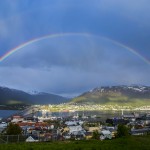
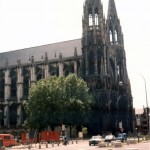
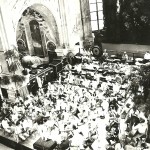
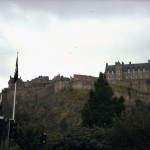
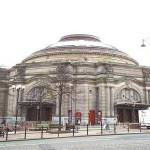
Recent Comments